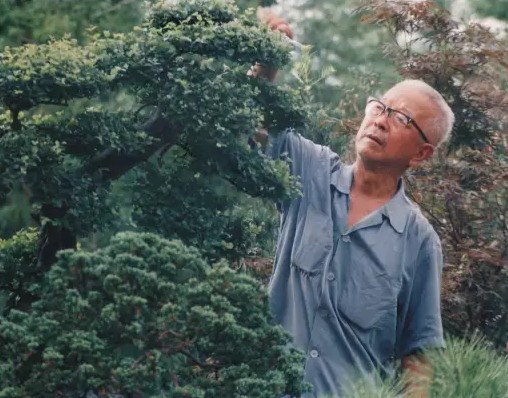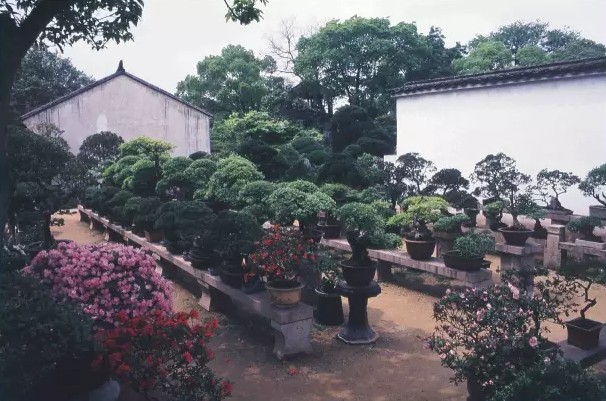Suzhou garden bonsai boutique will enter the Summer Palace
Suzhou is a garden city with the great achievements of oriental garden architecture. since ancient times, it has enjoyed the reputation of "Jiangnan gardens are the first in the world and Suzhou gardens are the best in Jiangnan". Suzhou has always been a gathering place for literati. The Wumen painting School, represented by Shen Zhou, Wen Zhengming, Tang Yin and Qiu Ying, has created a large number of poems and pictures for Suzhou gardens, and bonsai art has been influenced by this kind of culture and art for a long time. Gradually formed the regional characteristics and unique style of Suzhou bonsai.

During the Mid-Autumn Festival and National Day holiday this year, Suzhou garden bonsai will enter the Summer Palace and become an important part of the Osmanthus Culture Exhibition in the Summer Palace this autumn. From September 24 to October 11, 2015, more than 100 pieces of Suzhou bonsai will be displayed at the Summer Palace Water exercise School. The works are from Huqiu Mountain Scenic spot, Humble Administration Garden and Liuyuan Garden in Suzhou. At the same time, the Summer Palace bonsai will also be listed. During the bonsai exhibition, bonsai master Cao Jianqiang, bonsai master Rui Liangyuan, Suzhou Huqiu bonsai master Jin Jianguo and Wang Jing will also demonstrate their bonsai production skills on September 24 and October 6, respectively. At that time, the majority of bonsai lovers will feel the meaning of Chinese bonsai at close range in the Summer Palace.
Among the bonsai in China, Suzhou bonsai originated earlier and developed rapidly, which is called the five major schools of Chinese bonsai together with "Yang School, Sichuan School, Shanghai School and Lingnan School". Suzhou bonsai was formed in the Tang and Song dynasties, flourished in the Ming and Qing dynasties, and flourished in the contemporary era. When Fan Chengda Yinshi Lake, a famous poet in the Southern Song Dynasty, was made of quartz stone, Lingbi stone and Taihu Lake stone into bonsai, which was placed in several cases and named "Tianzhu Peak" and "Little Emei" for viewing. Since the Ming Dynasty, the bonsai art in Suzhou has become more popular, with wealthy households building gardens and common people setting pots for landscaping. In the Qing Dynasty, bonsai production around Huqiu Shantang was very prosperous, and there were more than 10 large bonsai gardens. In the 1930s, after Zhou Lianjuan, a writer, participated in the revival of bonsai technology, bonsai in Suzhou attracted people's attention again.
After the founding of the people's Republic of China, Zhu Zian, an veteran artist of bonsai, while inheriting traditional techniques, innovated boldly, creating a precedent with scissors as the main and tie as the auxiliary, gradually forming the artistic style of Soviet-style bonsai, and influencing the spread at home and abroad. In the early 1960s, Suzhou successively built three famous state-owned bonsai gardens, including Humble Administration Garden, Tiger Hill Bonsai Garden and Liuyuan Bonsai Garden, with thousands of fine bonsai bonsai. A large number of bonsai professionals won a total of 400 prizes in the 1st to 8th National Bonsai Exhibition, World Expo, BCI (World Bonsai Federation) Bonsai Congress and various horticultural exhibitions. In 2013, "Su-style bonsai skills" was included in the "National Intangible Cultural Heritage Protection list".
Time: 2019-06-04 Click:
- Prev

Prevention and control of edible fungi diseases, prevention and control of edible fungi diseases and insect pests
Control of diseases and insect pests of edible fungi
- Next

Suzhou Garden Bonsai Exhibition
Suzhou bonsai is created with ingenuity on the basis of absorbing the quintessence of Chinese traditional classical garden art and combining some techniques of Chinese landscape painting and flower-and-bird painting, reflecting silent poetry, three-dimensional drawing and sculpture of life.
Related
- Fuxing push coffee new agricultural production and marketing class: lack of small-scale processing plants
- Jujube rice field leisure farm deep ploughing Yilan for five years to create a space for organic food and play
- Nongyu Farm-A trial of organic papaya for brave women with advanced technology
- Four points for attention in the prevention and control of diseases and insect pests of edible fungi
- How to add nutrient solution to Edible Fungi
- Is there any good way to control edible fungus mites?
- Open Inoculation Technology of Edible Fungi
- Is there any clever way to use fertilizer for edible fungus in winter?
- What agents are used to kill the pathogens of edible fungi in the mushroom shed?
- Rapid drying of Edible Fungi

